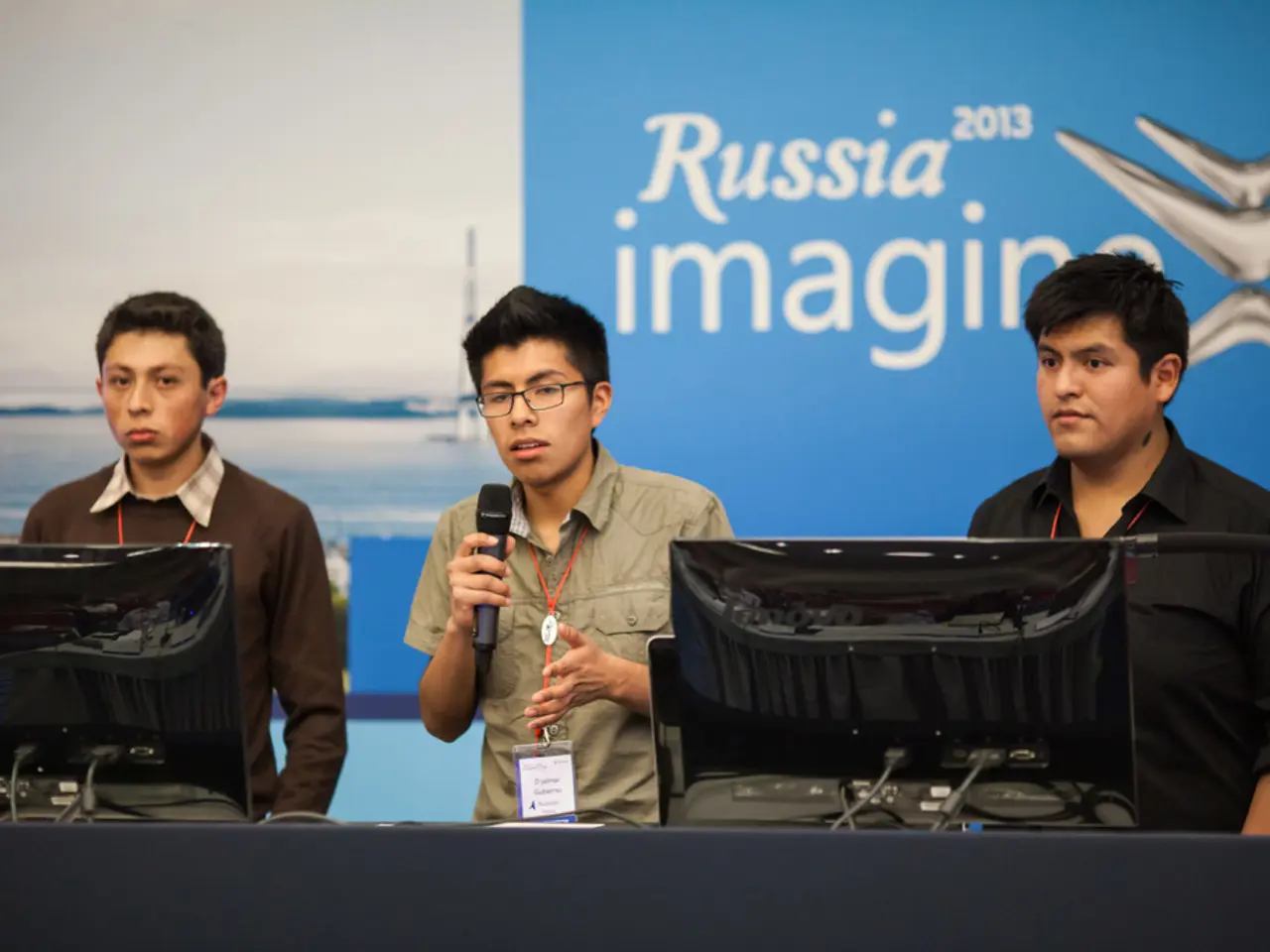Competitive AI Development in China as Discussed by Dylan Patel and Nathan Lambert
In the global arena of technological advancement, the US-China rivalry has reached a critical juncture, with both nations investing heavily in artificial intelligence (AI) and semiconductor technology. This competition, unfolding in 2025, has far-reaching implications for the global economy, innovation trajectories, and national security.
**Strategies**
The United States adopts a tech denial strategy, imposing export controls to limit China's access to advanced semiconductors, particularly AI chips and related model weights. This strategy aims to preserve US technological leadership and safeguard national security by slowing China's ability to produce cutting-edge technology. However, recent policy adjustments reflect ongoing calibration, with some Trump-era restrictions being rescinded.
To make technology denial effective, the US emphasizes the need for coordinated actions with allies and partner countries. Unilateral controls risk being circumvented and are less effective without a collective approach to restrict China's access to critical tech. In AI development, US companies like Meta have released models with varying degrees of openness, but the most advanced AI models remain proprietary, featuring closed weights and training data for safety and commercial advantage.
China, meanwhile, pursues a robust push toward self-reliance, investing heavily in semiconductor research and development. China's AI firms such as Baidu, Alibaba, and Tencent are increasingly adopting open-source AI models and open-weight approaches, fostering innovation and flexibility. This openness potentially encourages rapid dissemination and integration of AI technologies within China, contrasting with some US proprietary models.
**Implications**
The rivalry impacts global supply chains, investment flows, and technology standards. Restrictions on semiconductor exports disrupt supply chains and push China toward self-sufficiency, which may fragment global tech ecosystems. The US seeks to maintain its edge to deter perceived security threats, while China views technological advancement as central to its strategic strength.
The US recognizes that unilateral export controls are insufficient; alliances are essential to enforce comprehensive tech denial. This dynamic complicates US-China relations and affects other countries caught between competing economic and security interests. While competition dominates, there is a nuanced landscape where AI’s rapid evolution offers some possibilities for coordinated standards and ethical safeguards. However, open-source AI models present risks of misuse, including cyberattacks, which increases geopolitical tension around technology governance.
The ongoing adjustments in US export policy and China’s increasing capability suggest the tech race will remain dynamic. It may evolve from strict containment toward managed competition with selective cooperation in some areas, though fundamental rivalry over technological dominance will persist.
**Summary**
In summary, the US and China are engaged in a fierce competition for AI and semiconductor supremacy, with profound economic, security, and geopolitical consequences. The US employs tech denial strategies and relies on alliances, while China focuses on self-reliance and open-source models. The strategic calculus is clear: if transformative AI developments occur within the next 5-10 years, these export controls could prove decisive in maintaining US technological superiority. The semiconductor industry's future appears to be heading toward increased decoupling between the US and China, with China rapidly developing its capabilities in mature process nodes and the US focusing on maintaining its lead in cutting-edge technology.
- The competition between the US and China in AI and semiconductor technology has significant implications for personal finance, as investments in these sectors could yield high returns.
- The US-China tech rivalry has also affected the education and self-development sphere, with universities increasingly focusing on research in AI, cybersecurity, data-and-cloud-computing, and technology.
- In the sphere of career development, professionals in the finance industry, especially those involved in wealth-management and business, find themselves navigating a complex landscape shaped by this technological competition.
- The sports industry, specifically basketball, has not been immune to the impact of this rivalry, as sports-analysis tools often rely on AI technologies.
- The ongoing US-China tech competition has also influenced general news, with regular updates on policy changes, corporate strategies, and technological breakthroughs in AI and semiconductors.
- The dynamics of this tech race have implications for political affairs, as decisions about export controls can have far-reaching consequences for global relations.
- Crime and justice may also be impacted by advancements in AI, as the technology could be used for improved forensics, but it also raises concerns about privacy and security.
- The learning community is keeping a close eye on this competition, as understanding the evolving landscape of AI and semiconductors is crucial for staying competitive in various fields.
- The evolution of this rivalry could potentially lead to shifts in the power dynamics between nations, influencing the balance of wealth and influence globally.
- As the US and China continue to make strategic moves in the AI and semiconductor sector, it's essential for individuals to stay informed about this competition, as it could shape their personal growth, career paths, and financial prospects.




